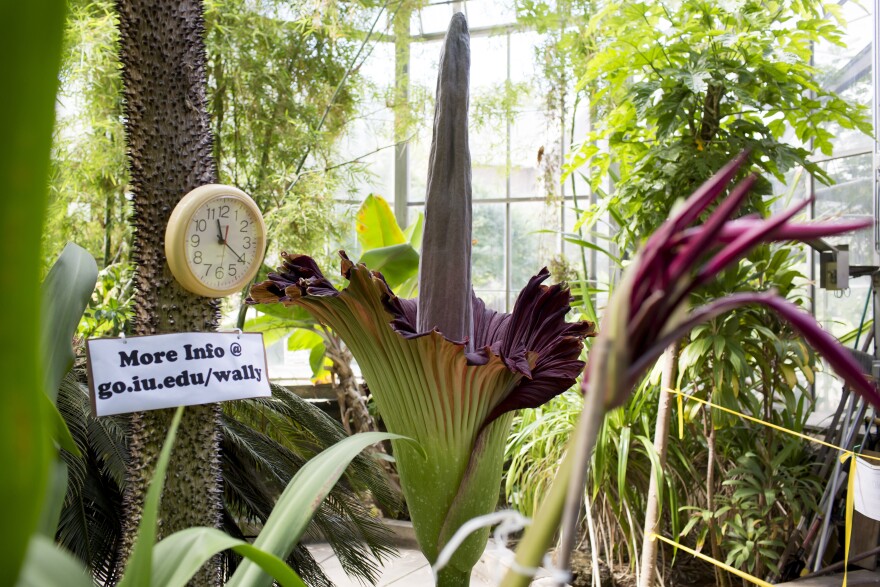In the United States, the last two weeks were a little smellier than usual.
More than 5,000 people flocked to a greenhouse at Indiana University last weekend to witness the brief, smelly bloom of the corpse flower, the largest flower in the world. The plant’s flower, when open, emits an odor akin to rancid, rotting flesh.
Corpse flowers only bloom for one day every three years or so, and only about a dozen bloom in captivity worldwide annually. However, this year, IU’s plant, nicknamed “Wally,” was one of six in the eastern United States blooming at roughly the same time.
It got people’s attention, but IU greenhouse supervisor John Lemon called it a coincidence. He predicts it will happen more frequently as corpse flowers become more popular.
“Probably more plants have flowered in the past 10 years than flowered in the previous 100 years,” he said, “just because as they bloom, seeds are distributed among colleges and universities and botanic gardens, and more and more people are growing them.”
Just as the plant’s smell lures pollinators to it in the wild, the corpse flower lures visitors from all over the country. The flower could be considered a “gateway plant.”
“Once they come in, they not only see the corpse flower, but they start looking around and they see a lot of other interesting things they weren’t aware of,” Lemon said. “It opens people’s awareness to the wide diversity of plants in general, it keeps peoples’ interest and that’s a good thing.”
Indeed, more than 5000 visitors took a whiff of Wally last weekend. Kevin Fryling, of Indiana University Communications, said the publicity surrounding the multiple blooms undoubtedly brought more attention to IU’s corpse flower.
The phenomenon has a scientific advantage as well. When more plants bloom at once, Lemon said, botanists can help each other fertilize them.
“It is convenient when a lot of plants are blooming close to the same time, because it does make the availability of fresh pollen more abundant and more chances for people to get pollen and get good fruit set on their plants,” Lemon said.
Even though the corpse flower has female and male parts, it’s considered “self-incompatible,” because those parts mature at different times, making self-pollination unlikely.
In the wild, there would ideally be multiple plants clustered together to fertilize each other. But single plants in captivity need more help. For example, after the IU flower bloomed, its pollen was express-shipped to the U.S. Botanic Garden in Washington, D.C. Scientists there will use it to pollinate another blooming flower and hopefully create new offspring.
This year, Bloomington didn’t receive any pollen itself, but Lemon is conducting experiments with freezing Wally’s, so that, with the help of scientists, the IU flower could potentially be self-fertilized.





